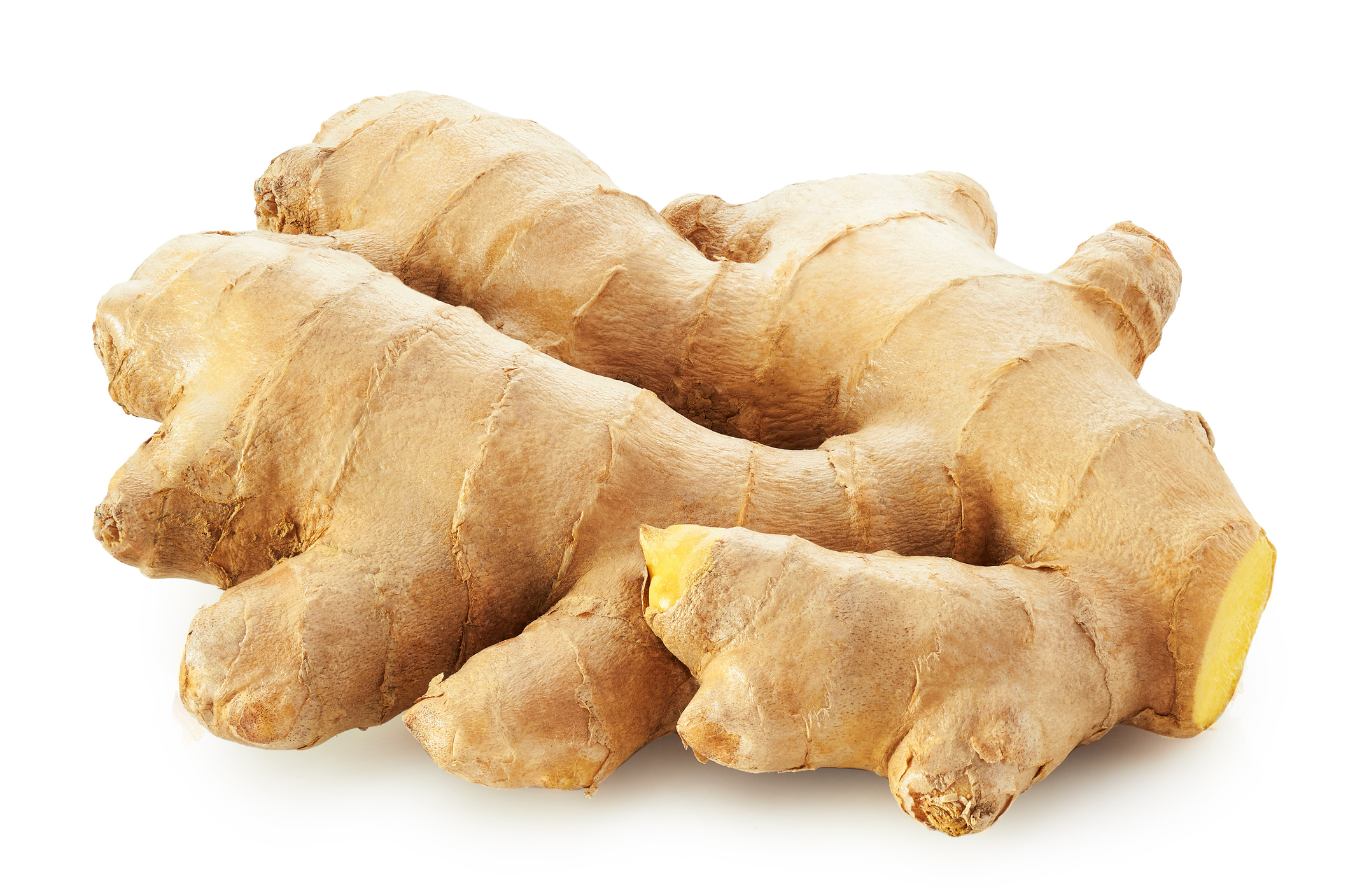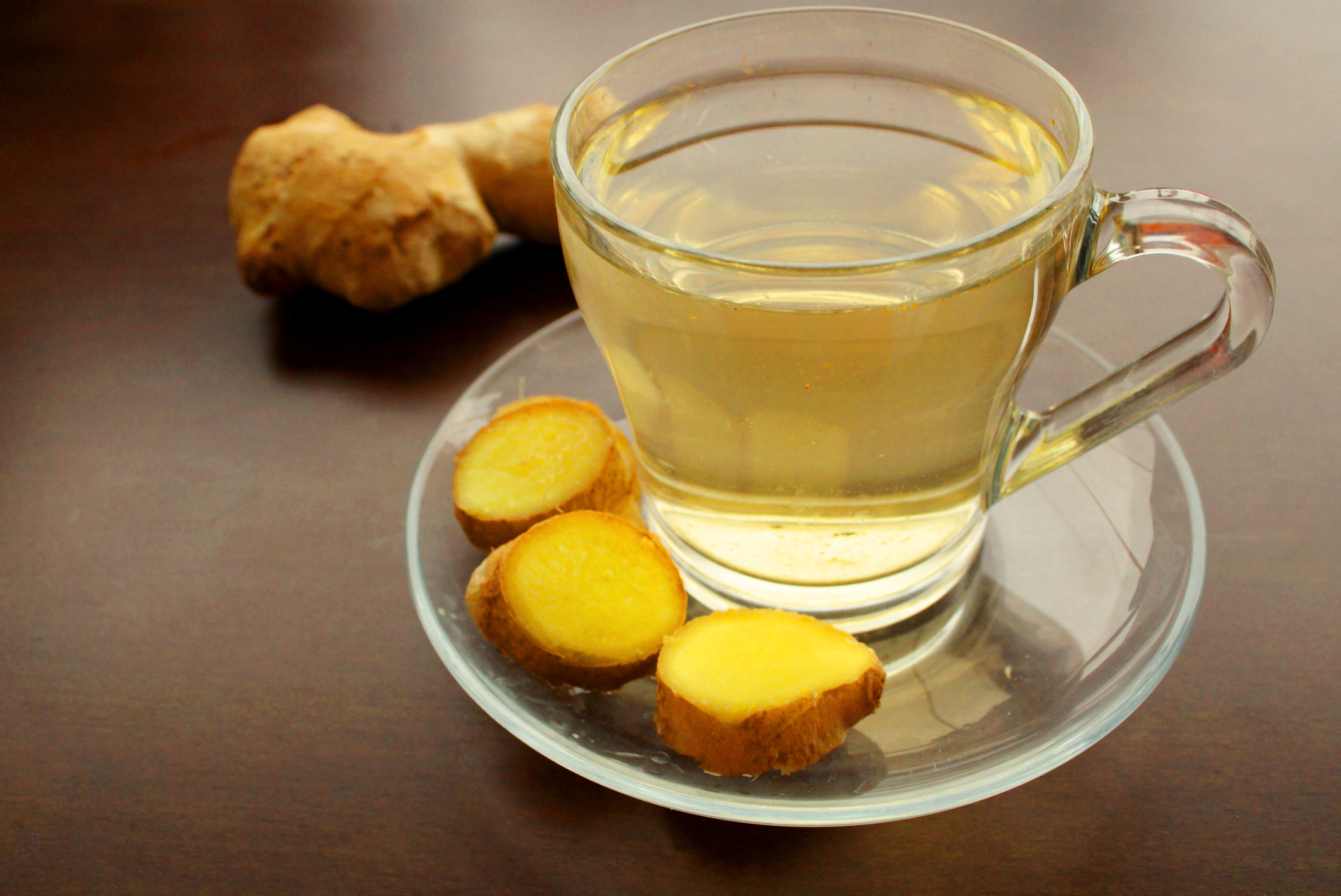- researchgate.net - BHATT N., WALY I. M., ESSA M. M., ALI A, Ginger: a functional herb.
- BOKELMANN M.J., Medicinal herbs in primary care, Elsevier 2022, ISBN: 978-0-323-84676-9
- GREEN J., The herbal medicine maker's handbook, Crossing press 2000, ISBN: 978-0-89594-990-5
- researchgate.net - SUPU R., DIANTINI A., LEVITA J., Red ginger (Zingiber officinale var. rubrum): its chemical constituents, pharmacological activities and safety, FITOFARMAKA: Jurnal Ilmiah Farmasi. 8. 23-29. 10.33751/jf.v8i1.1168.
- praktickelekarenstvi.cz - TŮMOVÁ L., Ginger - use in therapy and its possible interactions with other drugs, Praktické lékárenství | 2009; 5(6).
Ginger: What effects on the body does the spice have on health?

Most people know ginger from the kitchen as a spice. You'll recall its typical pungent taste and pungent aroma. But ginger offers much more than just a culinary experience. What is ginger, anyway, and why should you use it anywhere other than in the kitchen? Read on to find out everything you need to know.
Characteristics
Ginger belongs to the botanical family Zingiberaceae.
It is an herb with a bulb about 1 m long. It grows green, yellow-edged leaves. The above-ground part of the plant forms a tubular cup with a funnel-shaped crown. The crown leaves are yellow-purple with brown spots.
Ginger thrives in nutrient-rich soil. It grows in shady places in a warm and humid climate.

History of the plant
Ginger is thought to have originated in what is now India and Malaysia, from where it was introduced to the Mediterranean region as early as the 1st century AD.
According to some sources, ginger was known as a medicinal plant in England and Germany as early as the 9th and 10th centuries AD. After that, it fell into oblivion for a very long time.
In the 13th and 14th centuries, it was further spread by Arab and Portuguese seafarers. At that time, it began to be commercially cultivated in West and Southern Africa. Today, India is its largest commercial producer.
However, some authors state that the best (and most expensive) ginger comes from Jamaica and Australia.
The beneficial effects of ginger have been known since time immemorial, especially in Eastern medicine. It has been used in China, Arab countries, Tibet and India.
It was the Indian name of this plant , sringavera, that gave rise to its current Latin name, zingiber, first used by the English botanist William Roscoe. In his honour, one of the varieties of ginger is called Roscoe.
In ancient Indian medicine, ginger was used to lower cholesterol, prevent clogged blood vessels and as a remedy for arthritis.
Traditional Chinese medicine has found other uses for ginger. It is used to aid digestion and for nausea. Its use in snake bites or as a remedy for baldness may be somewhat controversial.
The ancient Greeks and Romans praised ginger for its aforementioned effect on aiding digestion. In England, it was even added to beer. In Arabic medicine, ginger is considered an aphrodisiac.
Today, it is mainly used in the kitchen as a spice or in the preparation of various drinks. It is more widely used in oriental countries. In India and Pakistan, it is an essential spice and is added to almost all foods and drinks.
In the Caribbean, ginger is used to make sorrel, a traditional Christmas drink. Jamaica is famous for its specific regional speciality, ginger cake.
The characteristic pungent flavour of this spice is attributed to the substances contained in ginger - gingerols.
What is harvested?
Ginger is cultivated for its underground part. Its articulated rhizome is harvested and used. It is a modified stem that forms roots. The individual cells of the rhizome are short and the whole rhizome is placed in the ground in a horizontal plane.

What are the effects of ginger?
Ginger can have a large number of positive effects. Expert publications mention the following in particular:
- Anti-inflammatory effect
- Antioxidant effect
- Antibacterial effect
- Antifungal effect
- Antiviral effect
- Lowers blood sugar levels - may help with diabetes
- According to some studies, it reduces fatty acid synthesis and the formation of adipose tissue cells. It may therefore be beneficial when trying to lose weight
- Anti-vomiting and anti-nausea effects
- Reduces fever
- Lowers cholesterol levels
- The anti-cancer action of ginger is currently the subject of a number of clinical trials
- Ginger is antiulcerative (against stomach ulcers) and gastroprotective
- Positive immunomodulatory effect - increases immunity
- Improves male and female reproductive health
Come and read more about some of these:
Anti-inflammatory effect
The anti-inflammatory effect of ginger is mainly due to substances called phenylpropanoids. Of these, the most important for this effect are the so-called gingerols. These are aromatic compounds - phenols.
Fresh ginger contains several types of gingerols, which differ in the length of the hydrocarbon chain. The most abundant gingerol is 6-gingerol. 4-gingerol, 8-gingerol, 10-gingerol and others are represented to a lesser extent.
Gingerols reduce the production of some key substances that are responsible for inflammatory reactions in the body (also called pro-inflammatory substances).
Namely, we can mention nitric oxide (NO), cyclooxygenase 2 (COX2), prostaglandin E2 (PGE2), tumor necrosis factor alpha (TNFα) and many others.
By suppressing the production of these substances, ginger can reduce inflammation of various origins (e.g. rheumatoid arthritis).
It has been used successfully as an ingredient in various pain and joint inflammation preparations. Reducing the production of pro-inflammatory substances is also the basis for its beneficial effect in reducing fever and pain.
Other substances acting synergistically anti-inflammatory with gingerols are the polyphenol gingerenone A and shogaols.
Gingerols are found only in fresh (raw) ginger.
Heat treatment and drying of ginger produces other substances such as shogaols and zingerones with additional beneficial effects.
The by-products of these chemical reactions change the taste of ginger that has been stored and cooked for a long time.
Antioxidant, antibacterial, antifungal and antiviral effect
The gingerols in ginger have anti-inflammatory and antioxidant properties.
This is due to their ability to neutralise highly reactive compounds in the body called free radicals. These compounds are capable of damaging various organs in the human body.
The elimination of free radicals from the body (as in the case of, for example, borage) supports the anti-inflammatory effect of ginger. Other substances that have this effect include the aforementioned zingerones and the organic compounds bisabolenes.
In total, ginger contains up to around 50 substances with varying degrees of antioxidant activity.
Ginger is also antibacterial.
Zingerenones (A, B, C) are thought to be the main antibacterial component, but this effect is common to several compounds in ginger.
Studies have confirmed activity against bacteria such as Staphylococcus aureus, Pseudomonas aeruginosa, Salmonella typhimurium, Eacherichia coli and Helicobacter pilori. However, their conclusions are inconclusive and further research will be needed to confirm them.
The studies agree on the usefulness of ginger as a suitable adjuvant in bacterial infections.
Ginger has antifungal activity due to its gingerol and 6-gingerdiol content. Among the mycoses on which ginger has an effect, we can mention the yeast Candida albicans. However, similar limitations apply as for the antibacterial effect.
Research has found that ginger has high activity against viruses. Studies have shown activity against influenza virus and rhinoviruses (rhinoviruses cause colds and rhinitis). Sesquiterpenes have been found to carry the antiviral effect.
Therefore, ginger tea serves well for flu and colds.
Immunomodulatory effect
The boosting of immunity can be considered as the effect of a combination of antibacterial, antiviral, antifungal, antioxidant and anti-inflammatory effects. All these effects in combination improve immunity and help the body fight against harmful environmental influences.
Anti-vomiting and anti-nausea effect
In animal studies, gingerols, galanolactone and 6-shoagol have been shown to be inhibitors of the receptors that are responsible for the onset of the vomiting reflex in the human body.
Further studies on human volunteers have more or less confirmed this finding. They conclude that ginger is a suitable remedy for vomiting and nausea of various origins. However, they also agree on the need for further research in this area.
Ginger may find its application in travel sickness (kinetosis), nausea after dietary errors or morning sickness in pregnancy.
Effect on the endocrine system
The aforementioned 6-gingerol lowers blood sugar and cholesterol levels. It may thus contribute to the improvement of diabetes (especially type 2 diabetes). It also has a beneficial effect on problems associated with high cholesterol levels, such as atherosclerosis.
It can reduce the risk of blockages in blood vessels. It may reduce the likelihood of serious cardiovascular (heart) diseases such as myocardial infarction, heart failure or stroke.
Among its effects on the endocrine system is its ability to control fat synthesis. It is thought that ginger may have a positive effect when trying to lose weight.
Anti-tumour activity
The anti-cancer activity of ginger has been a much debated topic recently. Studies have looked at colon, breast, ovarian and prostate cancer.
They have shown that, despite the need for further investigation, the potential of ginger as a suitable adjunct to anticancer treatment (at a dose of 0.5-2 g per day) is more than promising.
Effects on reproductive health
The effects of ginger in terms of increasing sperm count and motility have so far only been confirmed by high-dose studies (500-1000 mg/kg body weight) in rats. In males, a testosterone-enhancing effect has been observed at high doses (10-15 g/day).
However, the safety of this high dose with long-term use has not yet been confirmed. Therefore, such use cannot be recommended. It is possible that lower doses of ginger may improve sperm quality and count with long-term use.
According to other studies, ginger also improves ovarian and uterine function and increases the chance of pregnancy. However, studies have also only been conducted in rats.
Better documented is the effect of ginger on dysmenorrhea (menstruation associated with pain and menstrual cramps) and menorrhagia (abnormally heavy menstruation).
Studies on this issue have concluded that at a dose of 250-2000 mg once or twice daily during menstruation, ginger powder has been shown to relieve pain and cramps.
Starting at a dose of 300 mg twice a day also reduced the force of bleeding. Moreover, these doses showed no or only mild side effects.
Effects on the digestive tract
The beneficial effects of ginger on the digestive tract were known to ancient peoples. Ginger acts as a carminative (reduces gas in the intestines) and relieves intestinal spasms.
It is also gastroprotective, as it increases the secretion of protective mucus in the stomach. This makes the stomach lining more resistant to harmful influences. It can have a positive effect in gastric inflammation and ulcers.
Ginger increases the production of saliva and gastric juices. It improves appetite and promotes digestion as a whole. Fresh ginger has beneficial effects for constipation. Conversely, dried ginger can cause constipation.
Internal use
The most common form of internal use of ginger is certainly tea:
- Portioned tea in the form of sachets
- Fresh ginger tea

When using commercially available ginger tea, the preparation procedure is indicated on the package. It is important to choose a ginger tea that contains ginger in sufficient quantity.
Some of the products on offer are only flavoured with ginger. These may not suit your needs.
Another option is to prepare your tea from fresh ginger. The advantage is that you know exactly what your tea contains. The disadvantage is that it will take a little longer to prepare. So how do you prepare fresh ginger tea correctly?
Recipe for fresh ginger tea:
- 3-4 g of fresh, peeled and grated ginger
- 250 to 300 ml boiling water
Pour boiling water over the peeled and coarsely grated ginger. Leave to infuse for 15 to 20 minutes.
Finally, filter the infusion through a sieve or colander. This will get rid of the pieces of ginger that you no longer need.
This way you will get a milder ginger tea. When drunk regularly, it has most of the effects mentioned above. You can use it to warm up on cold winter days. It will also be good to drink when recovering from illness.
It can also be used for nausea after dietary mistakes (beware, not pregnancy ones!). Tea prepared in this way should be drunk fresh no more than 3 times a day.
To prepare the tea for morning sickness in pregnancy, use a maximum of 1 g of ginger per 250 to 300 ml of water. This is the maximum daily dose! It can be divided into smaller doses as needed.
During pregnancy, it is a good idea to consult a doctor about the possible use of ginger.
If you prefer a stronger, more spicy tea, you can use up to 15 g of ginger per 250-300 ml of water. However, this tea may not be to everyone's taste.
It is very pungent.
It can be used, for example, as a gargle for sore throats or as a drink after a particularly heavy meal.
Again, a maximum of 3 cups a day is recommended.
External use
Ginger has several options for external use:
- Commercially available preparations usually contain other substances with antifungal action.
- Some ointments and creams used to relieve joint and musculoskeletal pain also contain ginger.
- In the form of ginger essential oil. According to aromatherapists, it relieves nausea and joint pain.
Contraindications
Available clinical studies show that at doses of 1-4 g of ginger per day, there are no contraindications to the use of ginger.
Higher doses should not be given at:
- treatment with anticoagulants (blood thinners) - ginger increases their effect
- treatment with immunosuppressive drugs (drugs to suppress the body's immune response) cyclosporine - ginger reduces the concentration of cyclosporine in the blood and thus reduces its effect
- It is advisable not to consume ginger while being treated with this medication.
- treatment of diabetes - ginger increases the effect of drugs used to reduce blood sugar concentrations
- the presence of gallstones - ginger may aggravate the abdominal pain present in this condition
- The use of ginger in this disease is completely excluded.
Higher doses (10-15 g per day) are not recommended even in pregnancy because of the possibility of increased testosterone levels. Doses used to relieve morning sickness (up to 1 g per day) are an order of magnitude lower and are considered safe.
Ginger may reduce the amount of fat-soluble vitamins (A, D, E and K) and iron that are absorbed in the small intestine. This should be borne in mind when dosing multivitamin supplements with ginger, for example.
Sufficient time between supplements will solve this problem.
Side effects
Very high doses of internally taken ginger cause heartburn. Excessive external use (e.g. application of ointments containing ginger) can cause contact dermatitis, i.e. skin irritation.
Conclusion
You've learned that ginger doesn't just have to be used in the kitchen. With the right dosage and a little care, ginger can be a great help against many ailments.
Will you try it the next time you have a cold?
Interesting resources










